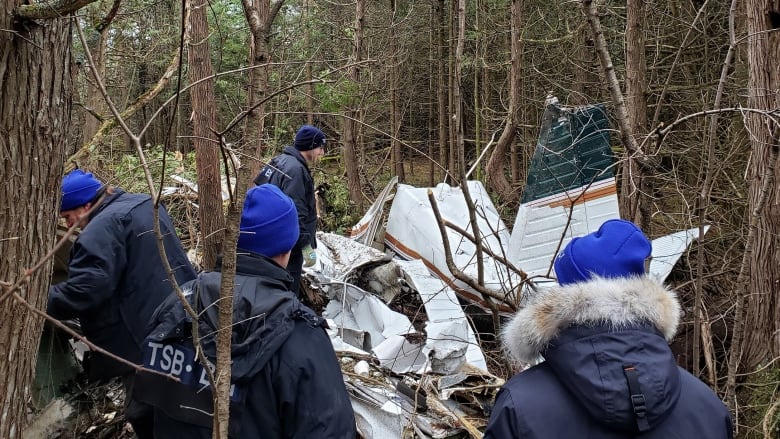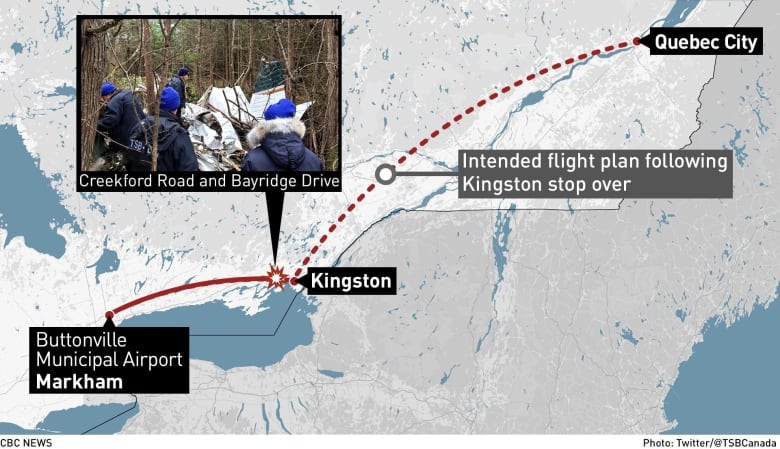From CBC News – link to source story
All 7 people on plane were killed on Nov. 27, 2019
CBC News · Mar 04, 2021

The Transportation Safety Board of Canada says poor weather and visibility were factors in a fatal plane crash in northeast Kingston, Ont., in November 2019.
Pilot Otabek Oblokulov, his wife and their children ages five, 10 and 14 from Houston, Texas, were killed. Oblokulov’s brother-in-law Bobomurod Nabiev and his wife Sabina Usmanova from Toronto also died in the crash.
The Piper PA-32 plane, better known as a Cherokee Six, was travelling Nov. 27, 2019 from Buttonville Municipal Airport in Markham, Ont., to Quebec City, said the Transportation Safety Board (TSB).
The plane made contact with Kingston’s flight service station — a facility that provides information to pilots — before crashing some time after 5 p.m. ET in a heavily wooded, swampy area in the city’s northwest.
In its report released Thursday, the TSB said the pilot gave the wrong position to his contact in Kingston about two minutes before impact. He was turning away from the airport when they last spoke, before climbing, rolling and dropping.
TSB said he had only flown in Texas and it doesn’t know if he checked any other weather sources than an app showing a wider look at the United States and areas along the Canadian border, which showed mixed precipitation.
If he had, the TSB said he would likely have seen forecasts that would have required the use of instruments to determine the plane’s altitude.
There was mist and moderate to severe turbulence in the area at the time of the crash, along with a relative lack of lights on the ground.

Oblokulov had received his private pilot certificate in 2018 and had little experience flying with instruments, according to the report. This means he was flying under visual flight rules (VFR), which relies on eyesight.
“Given the pilot’s limited flying experience, it is likely that he did not recognize the hazards associated with a night VFR flight into poor weather conditions,” the TSB news release said.
“While approaching the Kingston Airport, the pilot likely lost visual reference to the surface, became spatially disoriented, and lost control of the aircraft.”

The TSB said it has investigated five similar fatal crashes since 2013 and has recommended Transport Canada clarify its rules around flying under VFR at night.
The board said Transport Canada is in the process of drafting changes to its rules and has sent reminders to pilots about the risks of those kinds of flights.